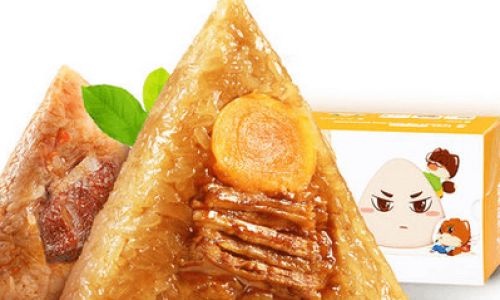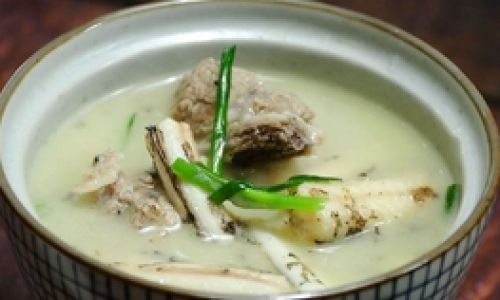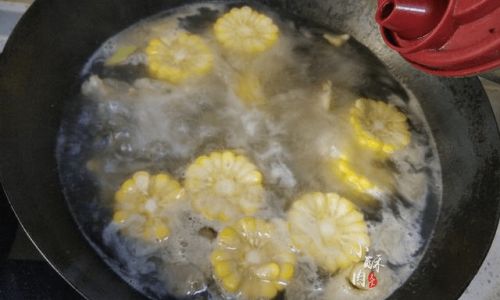Introduction
Zongzi, the beloved Chinese sticky rice dumpling wrapped in bamboo or reed leaves, has become a staple in supermarkets worldwide, especially during festivals like the Dragon Boat Festival. For those short on time or without access to fresh ingredients, frozen zongzi offers a convenient solution. However, cooking these pre-packaged treats to perfection requires precision. This article delves into the nuances of preparing frozen zongzi, focusing on cooking times, methods, and tips to achieve that ideal balance of soft, sticky rice and tender, flavorful fillings. Whether you’re a novice cook or a seasoned enthusiast, this guide will equip you with the knowledge to transform a simple frozen package into a culinary delight.

Understanding Frozen Zongzi
Frozen zongzi sold in supermarkets are typically vacuum-sealed or packaged in plastic to preserve freshness. Unlike homemade versions, which may vary in size and ingredients, store-bought options often adhere to standardized recipes, ensuring consistency. Common fillings include sweet options like red bean paste or jujube, and savory choices like pork belly or salted egg yolk. The freezing process extends shelf life but alters the texture slightly, making cooking time and technique critical to revive their original taste and texture.
Preparation: Before You Begin
Before diving into cooking, proper preparation ensures optimal results.
- Inspect the Packaging: Check for tears or punctures. If damaged, transfer the zongzi to an airtight container to prevent freezer burn.
- Thawing (Optional): While most frozen zongzi can be cooked directly from frozen, thawing for 15–30 minutes at room temperature may reduce cooking time slightly. However, avoid thawing for too long, as this can compromise texture.
- Rinsing (If Needed): Some brands recommend rinsing the exterior under cold water to remove excess ice crystals, though this is optional.
Cooking Methods: Boiling, Steaming, and Microwaving
The cooking method significantly impacts the final texture and flavor. Here’s a breakdown of each technique:
Boiling: The Classic Approach
Boiling is the most common method, yielding evenly cooked zongzi with a soft, moist texture.
- Steps:
- Fill a large pot with enough water to submerge the zongzi completely.
- Bring the water to a rolling boil over high heat.
- Gently add the frozen zongzi (no need to thaw) using tongs or a slotted spoon.
- Reduce heat to maintain a gentle simmer (medium-low to medium heat).
- Cover the pot and cook for 20–30 minutes.
- Key Tips:
- Avoid overcrowding the pot; leave space between zongzi for even heating.
- For larger zongzi (over 150g each), extend cooking time by 5–10 minutes.
- Add a pinch of salt to the water to enhance flavor.
Steaming: Preserving Moisture and Aroma
Steaming retains more of the zongzi’s natural aroma and prevents the wrapper from becoming waterlogged.
- Steps:
- Fill a steamer basket with water, ensuring it does not touch the basket.
- Place frozen zongzi in the basket, leaving 1–2 inches between them.
- Bring water to a boil, then reduce heat to medium.
- Steam for 30–40 minutes.
- Key Tips:
- Use a heatproof plate if the steamer basket has large gaps.
- For extra flavor, add a few pandan leaves or a teaspoon of soy sauce to the steaming water.
Microwaving: The Quick Fix
Ideal for impatient eaters, microwaving delivers speed but requires caution to avoid dryness.
- Steps:
- Remove zongzi from packaging and wrap in a damp paper towel.
- Place on a microwave-safe dish.
- Cook on high for 5–8 minutes, flipping halfway through.
- Key Tips:
- Let zongzi rest for 1–2 minutes after microwaving to distribute heat evenly.
- Avoid overcooking, as this can harden the rice.
Factors Affecting Cooking Time
Several variables influence how long to cook frozen zongzi:

- Size and Thickness: Larger zongzi (e.g., those with multiple fillings) require more time.
- Packaging Material: Vacuum-sealed zongzi may cook faster than those in thicker plastic.
- Altitude: At high elevations, water boils at lower temperatures, necessitating longer cooking times.
- Desired Texture: For firmer rice, reduce cooking time by 5 minutes; for softer results, add 5–10 minutes.
Achieving Perfect Texture: Pro Tips
- Soak Before Cooking (Optional): For extra-soft rice, soak zongzi in warm water for 10 minutes before boiling or steaming.
- Use Ample Water: When boiling, ensure zongzi are fully submerged to prevent uneven cooking.
- Check Doneness: Insert a skewer or toothpick into the center—if it exits without resistance, the zongzi is ready.
- Let It Rest: After cooking, allow zongzi to sit covered for 5 minutes to redistribute moisture.
Safety and Storage
- Refrigeration: Uncooked frozen zongzi lasts 6–12 months. Once cooked, refrigerate for up to 3 days or freeze for 1 month.
- Reheating: Reheat using the same method as initial cooking, but reduce time by 50%.
- Avoid Cross-Contamination: Use separate utensils for raw and cooked zongzi.
Troubleshooting Common Issues
- Undercooked Rice: Extend cooking time in 5-minute increments.
- Mushy Texture: Reduce heat to a gentle simmer next time.
- Burst Wrappers: Pierce the packaging gently before cooking to release steam.
- Dry Exterior: Wrap zongzi in a damp paper towel during microwaving or add a splash of water to the pot when boiling.
Exploring Regional Variations
While this guide focuses on store-bought zongzi, it’s worth noting regional differences:
- Northern China: Favors sweet zongzi with jujube or bean paste.
- Southern China: Prefers savory fillings like pork, mushrooms, and chestnuts.
- Southeast Asia: Often includes durian or pandan-flavored rice.
Conclusion
Cooking frozen zongzi is an art that balances time, technique, and tradition. By understanding the nuances of boiling, steaming, and microwaving, and adjusting for factors like size and altitude, you can consistently achieve restaurant-quality results. Whether you’re celebrating a festival or craving a comforting snack, mastering the cooking process ensures that every bite of zongzi delivers the perfect harmony of flavors and textures. So, the next time you unwrap a frozen package, remember these tips—and savor the satisfaction of a job well done.
Final Word
Zongzi is more than food; it’s a cultural bridge connecting generations and continents. With this guide, you’re equipped to honor that legacy, one perfectly cooked dumpling at a time. Bon appétit!





0 comments